My young son laughs when he first hears the song. “Who would want a hippopotamus for Christmas?” he asks, his nose scrunching up. He then imagines, out loud, the mayhem that would ensue with a hippo under the tree.
He’s referring to an old holiday tune, “I Want a Hippopotamus For Christmas,” a song with its own interesting history. It debuted in 1953, sung by a 10-year-old Gayla Peevey, and reached the Billboard charts. But the song faded quickly. Peevey went on to an interesting and productive life outside the limelight. Then, in 2016, the U.S. Postal Service featured the song in a television ad.
That ad rejuvenated interest in the song, and now it’s a part of most holiday music rotations, including the one playing right now in my home.
But let’s consider my son’s question: “Who would want a hippopotamus under the tree?”
It turns out, this idea may not be as far-fetched as it seems. In fact, there have been several high-profile instances where people have received hippos as gifts, and in turn, these have had consequences for conservation.
And let’s also not forget that while you might want a hippo, many rivers need them. So I hope you enjoy these hippo stories for the holidays.
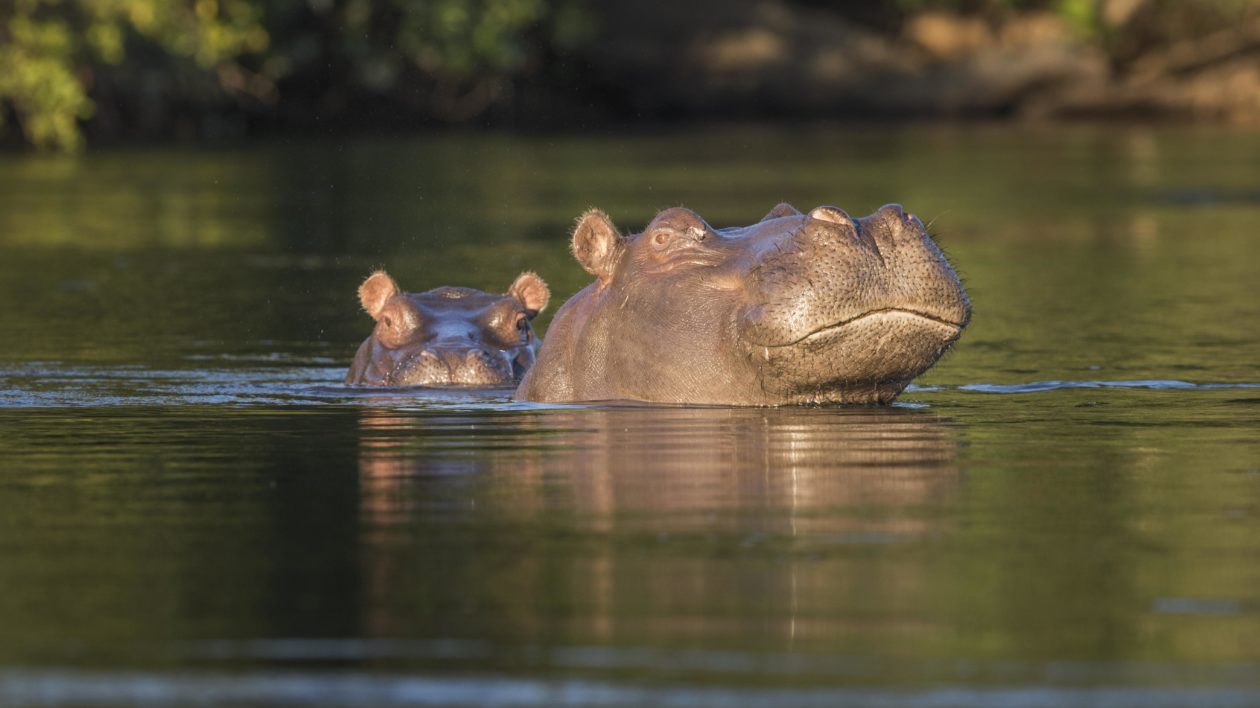
Pablo’s Hippos
The ruthless Colombian drug kingpin Pablo Escobar is often considered the wealthiest criminal in history, worth an estimated $30 billion at the time of his death in 1993. He used this wealth to purchase a number of truly astonishing properties, including his own island. And he enjoyed many of the ostentatious trappings of the super-rich, like fast cars and gold-plated showerheads.
And he loved exotic animals, with a menagerie on one Colombian property containing elephants, giraffes, ostriches and other creatures. But what most visitors noticed first was the estate’s pond, home to several hippos.
Owning exotic pets is not in itself noteworthy, but this story took a weird twist after Escobar was killed in a raid. Authorities gathered up the exotic beasts and placed them in zoos, but the hippos proved too unruly to capture. So they left the hippos in their pond, where they bred and prospered. And then moved into the nearby Magdalena River.
Most recent estimates place the population between 60 and 120 hippos, and the population is growing. It is the only hippo population living wild outside Africa.
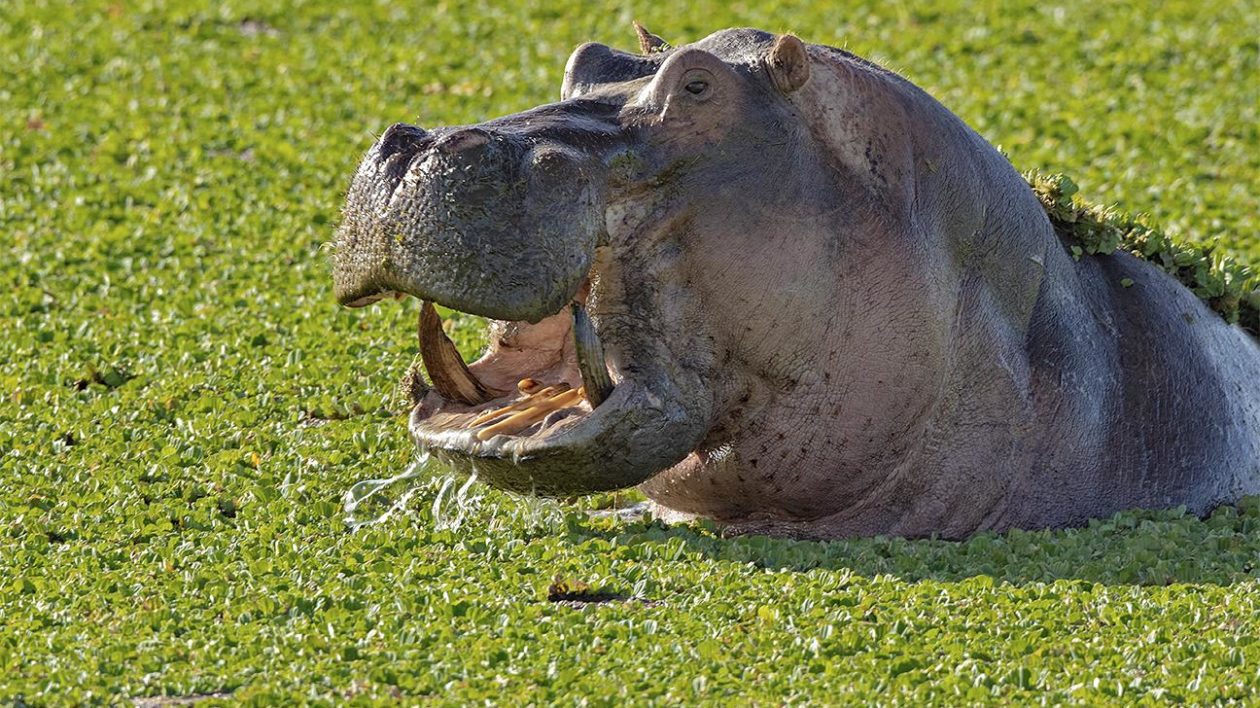
What exactly should be done with these hippos is the subject of heated debate. Hippos are not easy neighbors; they are aggressive and dangerous. In 2009, when one hippo killed local cattle along the Magdalena, and charged people, hunters were authorized to kill it. This generated such a huge public outcry that it scuttled any future plans for hippo culls.
In Africa, hippos are ecosystem engineers (more on this soon). A paper published this year in the journal Ecology found that hippos could also reengineer their new home in Colombia. The article found hippo poop in Colombian freshwater lakes foster cyanobacteria (also known as blue-green algae), potentially leading to eutrophication and fish kills. While this is not a problem yet, with unchecked population growth, it could have substantial future impacts.
But another paper published this year, appearing in the Proceedings of the National Academy of Sciences, argues that hippos in South America could perform valuable ecological functions that have been missing since the Pleistocene. The paper argues that hippos could serve as effective replacements for now-extinct megafauna that once roamed the continent. Think of it as a case of accidental rewilding.
This is a controversial idea, and like anything associated with the topic of Pleistocene rewilding, has as much to do with human values as with science.
Regardless, the hippos are still swimming and roaming along the Magdalena, the world’s largest invasive species.
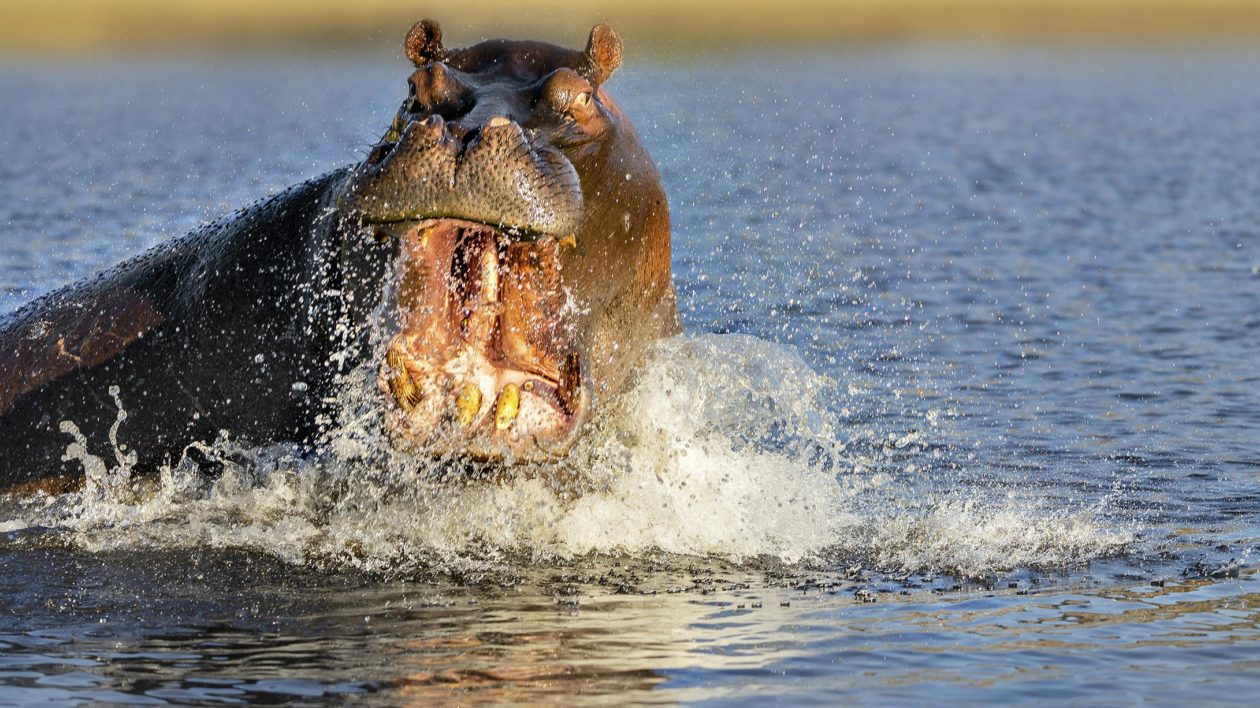
A Presidential Hippo
Unlike Pablo Escobar, President Calvin Coolidge was not known for outlandish tastes. He was often called “Silent Cal” for his reluctance to speak unless absolutely necessary. Let’s just say he would be unlikely to own a Twitter account and leave it at that.
Still, Coolidge had one thing in common with Escobar: a love of weird pets. His White House lawn featured a menagerie that included a wallaby, lion cubs, a bobcat and more. At one point he received a gift of a raccoon, meant for Thanksgiving dinner, which he pardoned and then kept as a beloved, if troublesome, house pet.
Arguably Coolidge’s most unusual pet was Billy, a pygmy hippo he also received as a gift. The pygmy hippo is a different species than the much larger common hippo found widely in Africa. Pygmy hippos are secretive and rare, found in western African rainforests.
Pygmy hippos are small only in relation to other hippos; they can weigh more than 600 pounds. Coolidge quickly donated Billy to the National Zoo, where he became one of the more popular animals. According to the Presidential Pet Museum, he was as “frisky as a dog.” He’s also a big part of the reason why, while pygmy hippos are nearly impossible to find in the wild, they are not uncommon in zoos.
Billy sired 23 calves in his life, 13 of which survived more than a year. These were shared with other zoos, and most pygmy hippos in U.S. zoos today can trace their lineage back to Billy.
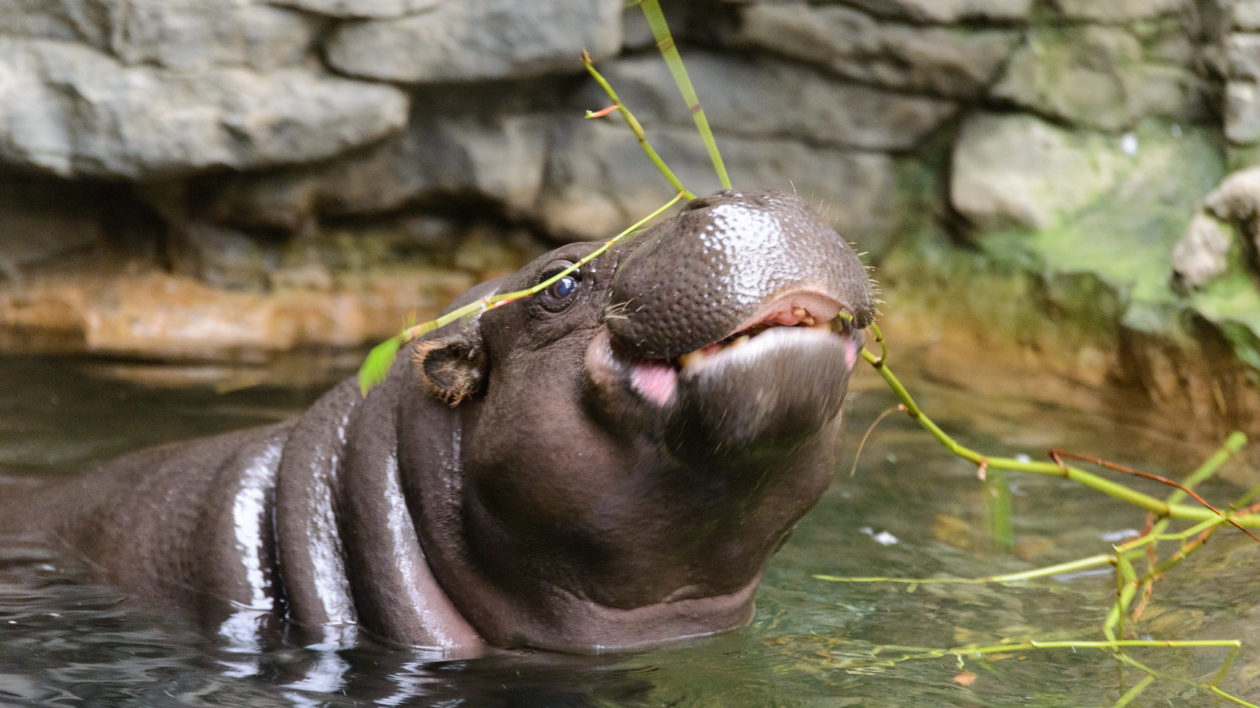
Hippo Ranch
In the early 1900s, a couple of entrepreneurs had their own dreams of hippos, and lots of them. In fact, their idea to turn large swaths of the southern United States into hippo ranches actually reached Congress for funding support.
The U.S. at the time faced a meat shortage, and the proposed solution was to set a bunch of hippos free in southern wetlands and bayous. The idea was that hippos could utilize a lot of habitat unsuitable for cows or other livestock and would provide tons of meat in the process. Journalist Jon Mooallem wrote a long-form piece on this quixotic agricultural quest, “American Hippo,” a story that involves rival spies and lots of other intrigue.
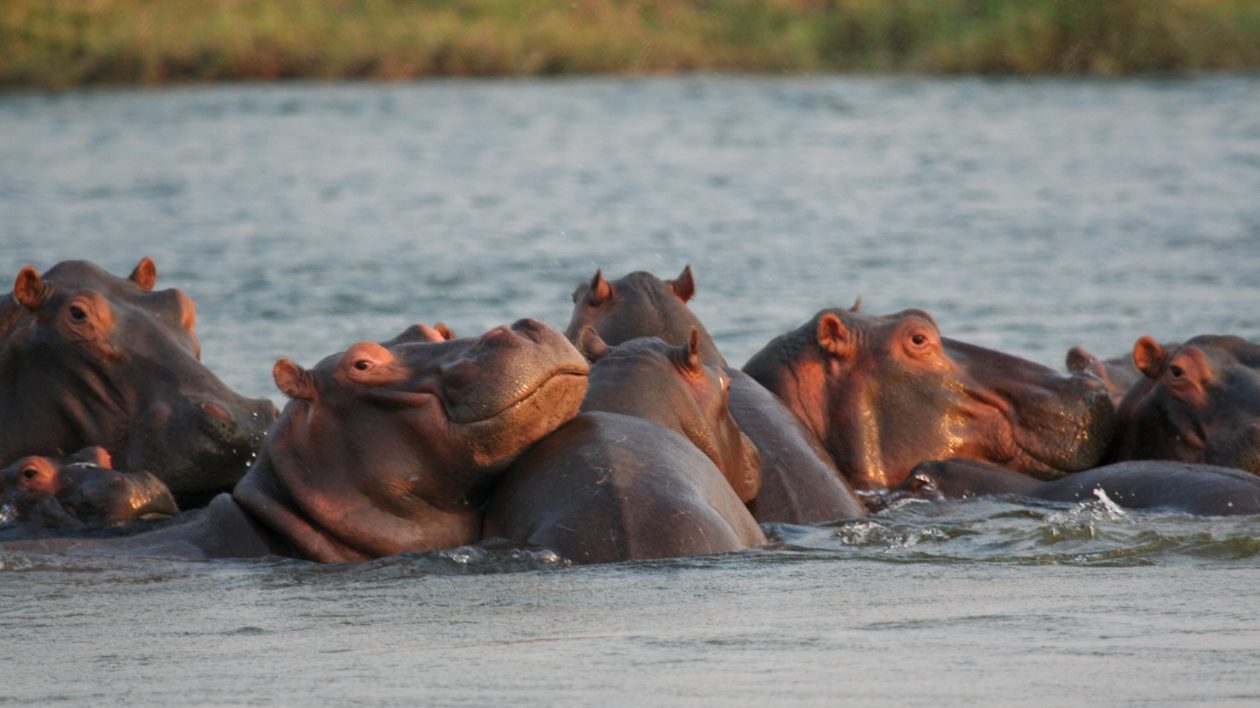
Obviously, the idea fizzled. It is often presented today as a nearly unbelievable scheme. But I find it entirely believable, as agricultural entrepreneurs are always searching for “alternative livestock” that will provide profit and new opportunity. Shortly after the hippo idea, other entrepreneurs thought the southern United States would be perfect for raising nutria for furs. Unlike the hippos, the nutrias were introduced – and are now a devastating invasive species.
Alternative livestock more often resembles a pyramid scheme, or the idea goes nowhere. I visited one Nature Conservancy preserve in Arizona that, under a previous owner, was the site of an experiment in farming eland, the large African antelope. While touring a Conservancy conservation project in Texas, I was surprised to see a herd of zebra galloping across a neighboring property.
People move animals around, sometimes as exotic pets, sometimes as the next big thing in livestock, sometimes as game animals and sometimes just because we love to tinker. This is why there are camels in Australia, African oryx in New Mexican deserts and pythons in the Everglades. But, thankfully, there are not 4,000-pound hippos in the bayou.
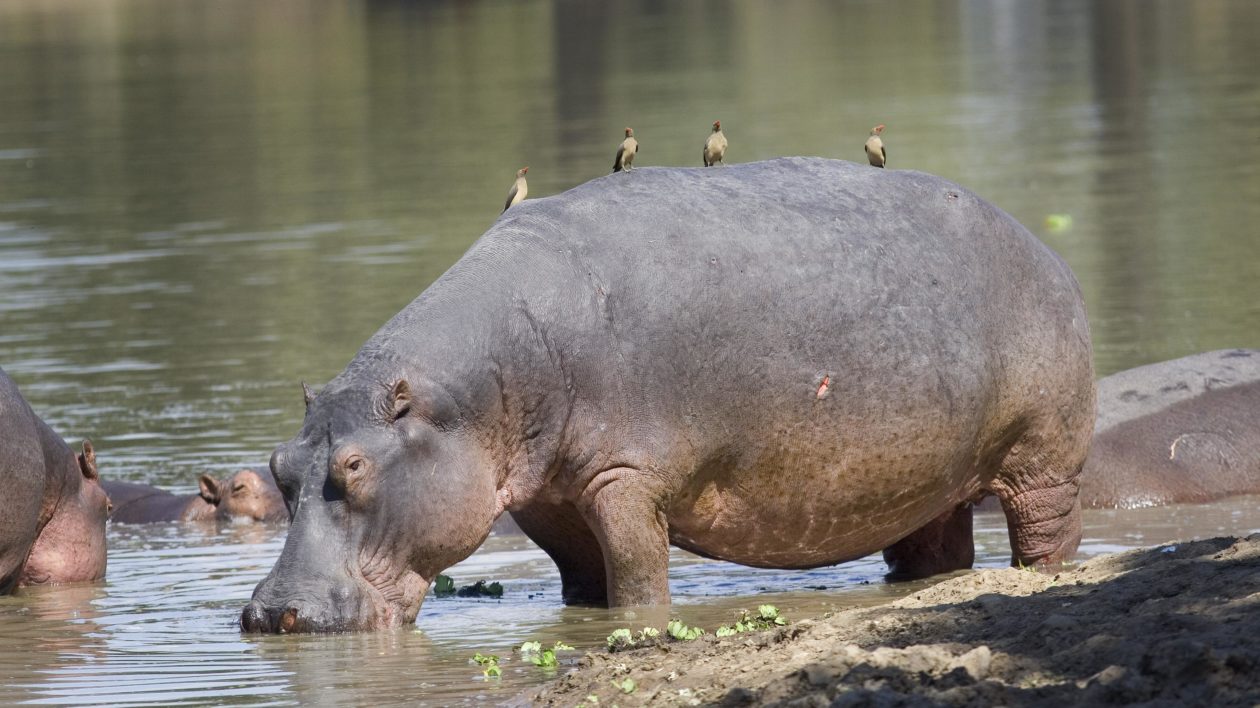
Why Rivers Need Hippos
As the holiday song goes, “I want a hippopotamus for Christmas. Only a hippopotamus will do…”. Well, for many aquatic habitats in sub-Saharan Africa, this sentiment is literally true. A hippo hero fundamentally shapes rivers and entire ecosystems. There is a robust recent literature on the ecological role of hippos: hours of reading for the nature nerd.
As Glynnis Hood points out in her excellent new book, Semi-Aquatic Mammals: Ecology and Biology (Johns Hopkins University Press), the common hippopotamus is an ecosystem engineer. The hippo can “create broad networks of deep trails that fill with water and enhance aquatic connectivity and change the distribution of water.”
The hippos actually create levies that make shallow lagoons, used by fish to survive the dry season.
Hippos also change ecosystems through their prodigious poop. Anyone who has seen a hippo defecating (I have) knows it is a spectacle: the tail rotates as the hippo does its business. This is the definitive illustration of the you-know-what hitting the fan. I should also note that, as my son imagined a hippo under the tree, his thoughts inevitably drifted to this scenario.
Aside from the yuck factor, hippo dung has its own impacts on ecosystems. One recent paper published in Science Advances, found that hippos cycle silicon from grasses to rivers, where it feeds diatoms, the base of the freshwater food chain. But another study, this one published in Nature Communications, found that sometimes hippo dung consumes so much oxygen that it causes mass fish die-offs.
This might seem alarming, but it may actually be what a functioning ecosystem looks like. As the always-interesting science writer Ed Yong notes that our notions of what constitutes a healthy river may be lacking because we have seen so few rivers influenced by large mammals: “It’s not a babbling brook of clear water. It’s a world of dead bodies, putrefying poop, and the occasional wave of suffocation.”
Hippos face many pressures. While elephant poaching gets a lot of attention, hippos are also killed for their teeth, which are marketed as a cheaper version of ivory. This poaching has increased dramatically in recent years.
Climate change is also a threat, as hippos need water. Recent work by researchers at the University of California-Santa Barbara sought to track hippo movements, helping better conserve these animals in a changing environment. Hippos forced to move due to lack of water brings them in more conflict with local communities.
Hippos are not a laughing matter for rural Africans. They eat crops and kill people. The UC-Santa Barbara researchers make the case that river buffers with lots of vegetation help protect people from hippos, and hippos from people.
I hope the new research on hippos helps people gain a new appreciation for these giant mammals, and that we all work to protect them. They don’t belong under your tree, but they will play the role of “hippo hero” in rivers across their native range.
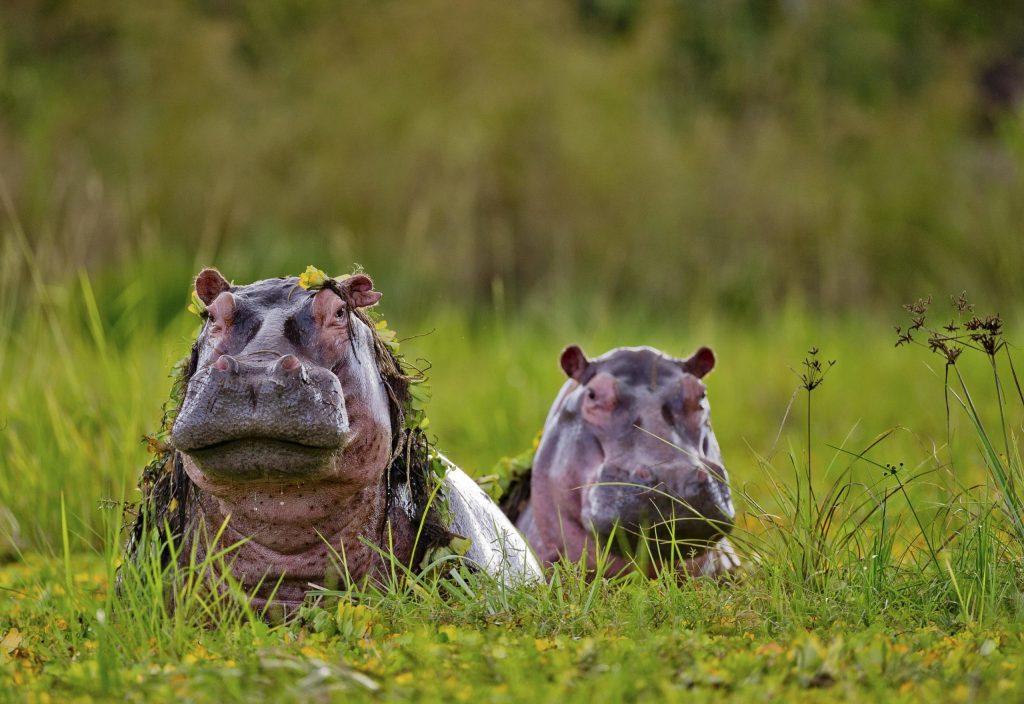



Hippo defecation is indeed an interesting evacuative event that does not lead to coprolite profusion for future scientific research. Cool article. They were the animals that were the most concerning for our guides in South Africa a few years ago and sadly many were dying because of a drought in the region they made for food for the Hyena’s and others but big time danger for farmers etc..
Once again, I sure picked up a lot of interesting information! Enjoy you sense of humor also!?
Thanks for your kind comments. I am glad you enjoy these stories.
Best,
Matt Miller
Cool Green Science editor